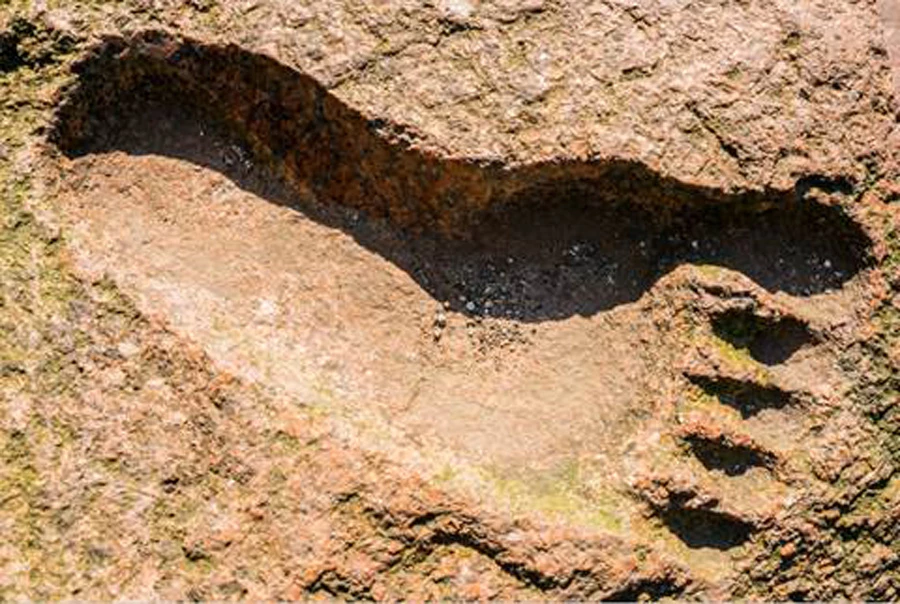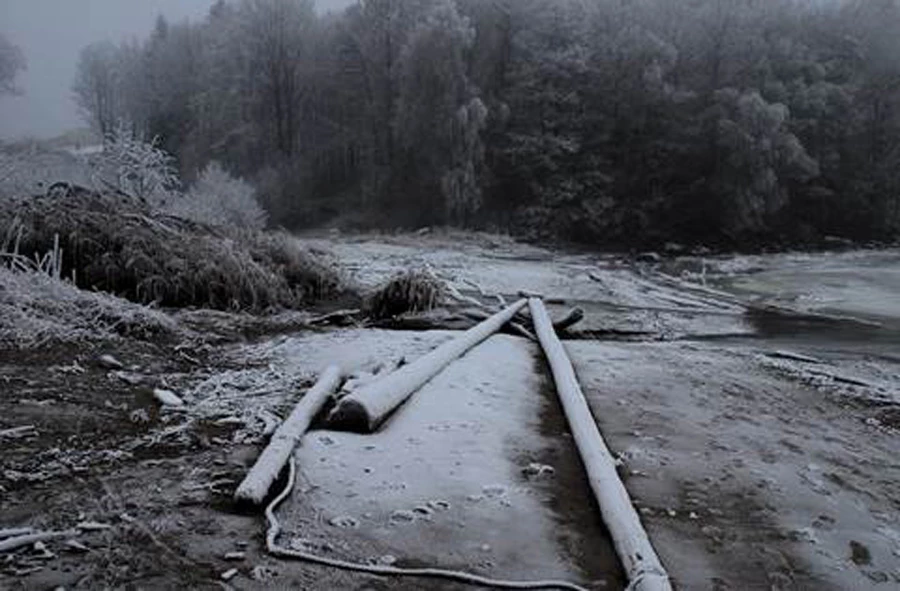Alaska, the largest state in the United States, is many things to many people. In places an almost pristine wilderness, it is filled with natural resources and untamed lands.
But with the isolation and the vast areas free from human habitation comes its fair share of spooky stories and unexplained happenings. One of them is from the Portlock village, in Port Chatham Bay only 200 km (124 miles) south of the state’s most populous city, Anchorage.
Nobody lives in Portlock now. In the 1940s the village was abandoned after the occupants were attacked and in some cases brutally killed by something which came from the woods.
The stories of what attacked the small salmon-canning settlement mostly revolve around a large and hairy beast that haunted the dark spaces beyond the treeline at the edge of the village. Whatever it was, it was extremely aggressive and deadly to anyone caught out on their own.
What was this creature? That is still to be definitively proven. However the locals had a name for it: the Portlock Sasquatch.
What Happened at the Village of Portlock?
Sasquatch, more commonly referred to as Bigfoot in the United States, is perhaps the most famous cryptid in history. Stories of the giant, bipedal man-ape wandering the vast forested territories of the Americas have been around for centuries.
However, these stories generally paint a very different picture to what happened at Portlock. Bigfoot is almost always reclusive and shy, avoiding human contact at all costs. Although the sheer size of this beast draws stories of aggression and danger, it is mostly known through the traces it leaves behind: hair snagged on foliage, and of course its big footprints.

Bigfoot is most commonly known from its footprints (Igor / Abode Stock)
Which is not to say that North America does not have dangerous animals which exist beyond a doubt. Bears, wolves and big cats roam the continent, and the people who settled at Portlock to make a life for themselves would have been tough indeed.
The village, established by Royal British Navy captain Nathanial Portlock in 1787, was in an unexplored and wild part of the country. It was a true frontier of America and only the hardiest would survive.
- Orang Pendek: Is There An Unknown Great Ape In Remotest Sumatra?
- India’s Haunted Village: Why was Kuldhara Abandoned?
At first, the settlement thrived. Salmon was plentiful in the bay and a cannery operation was established, attracting seasonal workers and bringing in money.
The first of the strange occurrences started in 1905, when people from the village were harassed by a large animal, which bothered their camps in the night. The work continued in the next season and the cannery workers came back, but the issue remained and whatever was out there returned as well.
In addition, various groups of gold miners and hunters used to head to the mountains for their work. Some of them never came back, but accidents were not uncommon and nothing was proven until 1931.
In that year a local woodchopper, alone in the forest, was found murdered. The man had been killed by a single ferocious blow, far more devastating than could have been inflicted by a single human being. This incident was scary enough to traumatize the entire village. What was out there?
Evidence from the Woods
The murdered man was only the first sign of an unknown threat in the woods surrounding the village. A group of hunters out stalking moose came across the giant footprints of some big animal. The area around the footprints was torn up with tree branches destroyed and blood found at the scene. But the trail of the moose ended abruptly here, and of either animal there was no sign.
The size of the found footprints was more than 46 cm (18 inches) long. Whatever had attacked the moose, it was the only set of tracks leading from the site of the attack, until they were lost in the rock-filled terrain.
Soon, other such footprints were reported around the village, and worse. A resident of the village happened to see a huge and hairy man destroying the fish wheels used to process salmon, that he described as looking like a devil.
The fish wheels were near the beach, away from the witness’s shack. The resident rushed to get his gun, and when he returned, he saw the beast staring at him. Then the beast suddenly walked away without harming the resident.
The sightings became common and uneasiness began to prevail in the village. These were not people who were easily scared by wildlife, and furthermore they would be well aware of the local predators in the area. This could not be some bear or else they would have identified it as such. This was something else.

And then, bodies started appearing around the village. Many were washed into the bay from the rivers that fed it, suggesting the people, trappers and miners, had been surprised and killed in the hills and forests above Portlock.
- The Yowie: More Than Just Australia’s Bigfoot?
- Rock Apes of Vietnam: Jungle Cryptid of the Vietnam War?
As the local population started recovering bodies, speculation regarding the deadly beast started to rise. Fear took root in the population at the loss of so many lives, and people started to leave the village. The cannery plant posted armed guards to attempt to keep the cannery open, but it was no use.
The last residents fled in 1950, and the village lay abandoned. Whatever lived in the woods above Portlock, and whatever had killed all the people, it had won.
A Sasquatch?
Teddy Roosevelt, the 26th President of the United States, wrote stories of his childhood that include an encounter with “Bauman”, a seasoned trapper in Idaho. Bauman told of an encounter with a huge, hairy creature which attacked him. He barely escaped with his life and he was convinced that it was a bigfoot.
Roosevelt also wrote an account of the finding of a trapper’s body. The body was partially eaten by an unknown beast that left human foot tracks in its wake.
But such stories, although consistent with the accounts from Portlock, only allow speculation as to what happened in the Alaskan settlement. They fit the facts, but require the existence of a sustainable population of huge apes, sharing a landmass with hundreds of millions of people without a single piece of concrete evidence as to their existence. For some this is a step too far.
But the events at Portlock are not so easily explained. Something was killing the inhabitants and leaving their dismembered corpses to be found by the villagers, washed up on the banks of the bay or out in plain sight, left where they had been killed.
This does not match the behaviors of many known wild animal. Bears are certainly large and strong enough to do the damage seen by the villagers, and would be attracted by the salmon canning plant, but the footprints and eyewitness accounts dispute this. The people of Portlock knew what a bear looks like and this was no bear.

Wolves would not attack healthy humans in daylight for almost any reason, and big cats would also slink away into the forest rather than dismember human beings.
So, what can be said for sure about the attacks? The creature, from the scant eyewitness accounts, was large and covered with hair. It left large tracks which matched a human’s foot of great size. It was strong enough to kill and dismember a grown man. And it lived in the remote wilderness of the North American continent.
Sounds like a bigfoot to me.
Top Image: The deaths were very real – was the Portlock Sasquatch real as well? Source: GARETH / Adobe Stock.
By Bipin Dimri